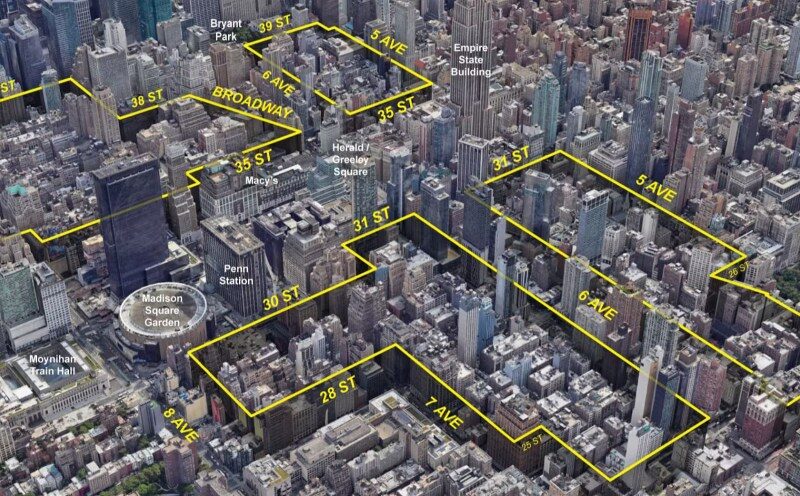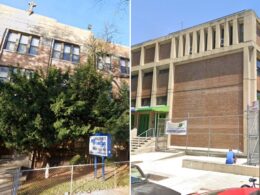New York City is facing a housing crisis. In the 1920s alone, New York City built more housing than from 1970 through the 2010s. The city has failed to produce the housing needed to meet demand for its growing population. As of now, the city builds 25,000 homes per year, which is only half of its overall need.
Part of the housing crisis stems from the mismatch between housing development and job creation. Between 2010 and 2023, the city created three times as many jobs as housing units. Particularly in Midtown South, there is an urgent need for action.
After the COVID-19 pandemic, office spaces and commercial buildings throughout the area remain vacant, as work-from-home has become a new normal. With empty or outdated offices and a shortage of housing it would be common sense for a transition to residential to take place. However, archaic zoning has made this impossible.
This has left Midtown South in a state of limbo between a commercial focused past and a neighborhood oriented future. This is why the passage of the Midtown South Mixed-Use Plan will be monumental in delivering much-needed improvements for our neighborhoods.
This summer, the New York City Council approved the Midtown South Mixed-Use Plan, encompassing a 42-block area of Midtown South roughly bound to 40th St. in the north, Fifth Ave. in the east, 23rd St. in the south, and Eighth Ave. to the west. This plan will deliver nearly 10,000 new housing units, (including nearly 3,000 affordable housing units) and invests $488 million in community benefits and infrastructure improvements for schools, transit, and parks.
With the passage of the plan, this investment ushers in a new era for a thriving, safe, affordable, and better-connected Midtown South community.
There is, however, a hole in the Midtown South Mixed-Use Plan, covering nearly the exact area of Midtown South encompassed by the Penn Station General Project Plan (GPP). A large swath of my district was included in the Penn GPP, which is under the state’s jurisdiction.
This GPP was intended to fund the redevelopment of Penn Station by allowing greater commercial development in its surrounding areas. While the city’s plan will deliver enormous improvements, the state’s GPP has failed to produce results. There is no known timeline for the future of the plan and entire blocks are frozen in a bureaucratic limbo.
But the governor, whenever she sees fit, has the ability to amend the GPP to create new housing, green public spaces, and improved transit options so that the neighborhood’s success does not fall behind compared to the rest of the region. This is why I called on Gov. Hochul to reopen the GPP.
I envision a new Midtown South that is a true mixed-use community. Rather than sterile and vacant office towers, the region surrounding Penn Station can combine retail, affordable housing, and a world-class green space that rivals Bryant Park. This is what our community deserves, and it remains within reach.
In order for the Midtown South Mixed-Use Plan to take effect, it needed the approval of the Council, the mayor, community stakeholders, and more. For the GPP, the governor alone is necessary to set the amendment process in motion. Without her action, the neighborhood will remain in limbo, unable to provide 5,000 units of housing, a grand new gateway park with recreation space, and improved transportation infrastructure. Further, stalling the GPP will leave the heart of Midtown Manhattan behind.
It is not too late for the state to step up. There is still an opportunity to align with the city. The governor can immediately reopen the conversation to bring a reimagined vision for this neighborhood to life. Amending the GPP to focus on housing, green space, and streetscape activation would usher in a historic new era for Midtown. Gov. Hochul can lead the nation in combating the housing crisis with a stroke of her pen. The time to act is now!
Simone, a member of the New York State Assembly, has Penn Station and its environs in his Midtown district.








